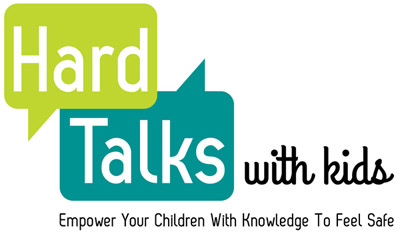

How to Talk to Kids About Death Including the Loss of a Beloved Pet – by Dr. David Schonfeld
hard talks March 13, 2017 admin 1

The death of someone close to a child, including the death of a pet can be very overwhelming. According to Dr. David Schonfeld, there are four concepts about death that are important for children to understand. Children who understand these concepts will be better prepared to cope with a loss. Most children learn these between 5-7 years of age but children much younger have grasped these concepts. Note that these are concepts which can be understood, acceptance is a separate issue. Understanding has to come first, before one can begin acceptance.
Estée Pouleris: What are the four concepts of death?
Dr. Schonfeld:
1. Death is irreversible.
Adults are often under the assumption children can’t understand this. Adults may describe death as “going on a long journey.” As a result children may view death as a temporary separation. They may even be angry at the person for not contacting them or returning. An essential first step in the mourning process is understanding and accepting that the loss is permanent. My daughter, as young as 20 months, grasped this concept when I explained Grandma is ‘all gone.’ She pointed to a page in a baby book showing an empty cereal bowl and repeated ‘Grandma all gone.’ I said ‘yes, she’s all gone.’ She never looked for her in the room which she was bed ridden in again.
Understanding this concept allows children to begin to mourn.
2. Finality.
Very young children (typically under 7) initially view all things as alive—toys, rocks, cars. My daughter once asked after a long road trip if I’d go back out to the car to get her doll, which she left in there, so it wouldn’t get cold. As they grow older, children will understand that inanimate objects are not alive, but they may still be confused at times. Children may assume a person who has died doesn’t move because there is no room in the coffin. If a child buries a deceased dog with it’s favorite toy, it may assume the dog will play with it. Children may believe the deceased will see how dark it is in the coffin, or hear the sound of dirt falling on the casket. Children may worry that the deceased is suffering—afraid, cold, hungry, in pain, or lonely.
Understanding this concept helps children realize the person who died is not suffering.
3. Everything that’s alive eventually dies.
Children sometimes exclude that they or their loved ones will die. Some parents reassure their children that they will always be available to take care of them. They may tell their children they don’t need to worry about dying. It is understandable that parents want to shield their children from death, but once a death occurs in a child’s life, these messages can be troubling and confusing. It is difficult for children to learn this concept the first time a death occurs. If they do, children may worry that all the people they care about will die and they will be left alone. If children don’t see death as inevitable, they may wonder why a particular death occurred. For example if their dog died they may believe it’s because it was a bad dog, or even that the child did something bad and the dog’s death was a punishment.
Understanding this concept makes it less likely that children will associate death with guilt and shame.
4. There are physical reasons someone dies.
When children don’t understand the true reason a person died, they are more likely to create explanations that create confusion and add to guilt or shame. Adults can help children understand the physical cause of a death of a loved one or pet by explaining the illness or the age span of the pet.
Understanding this concept helps minimize possible confusion and feelings of guilt and shame children may feel when a loved one dies.
Estée Pouleris: How do you talk to your kids about the death of a beloved pet?
Dr. Schonfeld: First of all, you want children to understand what death is and what it means before they’re presented with a personal loss. It’s better to present that in a general sense. Just like they know something is alive, you can start explaining when something is dead. For example when they find a dead bug on the ground or a dead bird when they’re walking in the park. Use those opportunities to introduce what death means to children rather than waiting until they’re about to be exposed to a personal loss. The loss of a pet is a very meaningful loss to a child and you would want them to have the information and knowledge so they can cope. When they lose a pet you want to be able to focus on the coping part as opposed to the understanding part. Sometimes you have to do both at the same time, but I wouldn’t plan to do it this way.
The first thing you want to do is let them know the pet is ill. Often times you find out a pet is ill and they’ll need to be treated or euthanized right away. Unfortunately there often isn’t much opportunity to let them know the pet is ill. This is probably more common for pets than people because people can communicate their symptoms more effectively.
So if you know a pet is getting old or part of their body is failing, let the children know that. Let them know the pet is very very old. You can also let them know smaller animals don’t live as long as people do in general. And you can explain to them a little bit about the life span of a pet, and let them know their pet is reaching that stage because it is very old. You don’t have to say it’s going to die, because everything dies. You can say the pet is very old, or the pet is very ill. And I think then you can say we’ve gone to have the pet checked and the doctor is concerned that the pet is very ill and may not get better again.
It’s not so much you’re preparing them for death, it’s more that you’re notifying them about the seriousness of the illness.
If you predict death or the time of death, it’s really hard to do and you may be off, so I would try to avoid predicting the day or time, unless it’s a plan for euthanasia. You may stick with language that the pet is really sick and you don’t believe the pet will recover from the illness. And depending on the age of the child you can add they may even die from it. This is similar language you can use for people too, unless you know they are actively dying at which I’d be more direct and can predict a little more.
If a child is going to lose a beloved pet, be mindful of the transition. My daughter had a pet bunny who we thought was constipated. Her regular vet was closed so we brought her elsewhere and the new vet immediately said the bunny is going to die. So we went from thinking the bunny was constipated to hearing it’s immediately going to die. I pulled the vet aside and asked for some time so my daughter could transition into this situation. I knew rushing her through this moment would be a mistake. So I asked if this vet could make a call to our regular vet (and made clear I wasn’t second guessing his judgement). It was important my daughter understood we were doing everything that could be done. After the vets spoke, our regular vet got on the phone with my daughter and explained there was really nothing that could be done and it was good she brought the bunny in but there is no treatment we can do at this point. She was then asked if she wanted to bring the bunny home or if she wanted to euthanize the pet. Since the bunny seemed really uncomfortable she thought it was best to be euthanized.
Estée Pouleris: That’s very mature, how old was your daughter?
Dr. Schonfeld: Somewhere around 8 or 9 years old. She knew that as long as everything has been done it was the right decision. The vet then asked ‘do you want to take it back to bury it or would you like me to cremate it.’ She said ‘you can take care of it, I don’t need it back to bury it.’ Later over the weekend she wondered what was being done with the rabbit’s body. As she thought about it she was curious if he was actually cremating it, was it going in a mass grave, was it being thrown out, what was happening. So I called on Monday and asked how it was handled and they told me they cremated it and disposed of the ashes respectfully. And she said ‘okay, that seems fine. I’m comfortable with that.’
So I think what you want to do is incorporate the children in the plans for what’s happening.
Estée Pouleris: Should a child be present the euthanasia?
Dr. Schonfeld: I think what you want to do is ask the child what they would like to do. You can ask if they want to be present, or if they want to say goodby before. Some of this will depend on the age of the child and their preferred coping mechanism. If they want to hold the pet while the pet takes it’s last breath, you can inform the child what that experience is likely to look like (with vet’s guidance). If they choose to be present, be sure the child is accompanied so if they want to exit the room at any point they are able to do that. Do not refer to this as ‘putting the animal to sleep.’ That would be a mistake for a young child. Because they tend not to understand the difference between sleep and death. If you misuse the terms it could be confusing particularly to young, preschool aged children or younger.
Estee Pouleris: My daughter’s grandfather recently died. My daughter and he shared a beautiful relationship, but he lived in another state so we only saw him every so often. We have a beloved pug who she has a very intimate relationship with and even sleeps with. When our dog dies this loss will be really hard on her.
Dr. Schonfeld: You’ll find that the significance of death changes over time. When somebody dies you not only lose the person, but you lose everything that person did or would have done for you in the future. These are called secondary losses. For example lineage can become very important as one grows up and a deeper significance to a relative may start to mean more. The loss of pets tend not to have the same enduring quality over time. Of course they are important and significant but it is different with humans.
What I find is that families often do not share information when a pet dies because they are trying to shield the children. They make up stories as to where the pets have gone or even replace them with look-a-likes (like fish or turtles). It’s best for parents to allow children to experience these deaths and use these opportunities to help kids learn about life. Experiences with pets and how we deal with pet death does provide a context for children to talk about death in general. And it lays a foundation in understanding about the experience of losing someone they care about.
Estee Pouleris: When is the appropriate time to get a new pet? Is it when morning is done?
Dr. Schonfeld: I don’t believe mourning ever ends. You continue to grieve someone close for the rest of your life – there really is no ending to it – it just changes. There will be a time when the child is ready for a new pet. Getting a new pet to cheer them up is not a good reason, and it invalidates the feelings they had for their previous pet. Allow the child to experience the loss unencumbered by trying to form a relationship with a new pet. And when the family feels ready, the new pet should not be a replacement.
David J Schonfeld, MD, FAAP – Dr. Schonfeld is a developmental-behavioral pediatrician and Director of the National Center for School Crisis and Bereavement, located at the University of Southern California School of Social Work. He is Professor of the Practice in the Suzanne Dworak-Peck School of Social Work and Pediatrics at the University of Southern California and Children’s Hospital Los Angeles.

Dale
March 13, 2017 #1 AuthorVery helpful material. Thank you for presenting it.